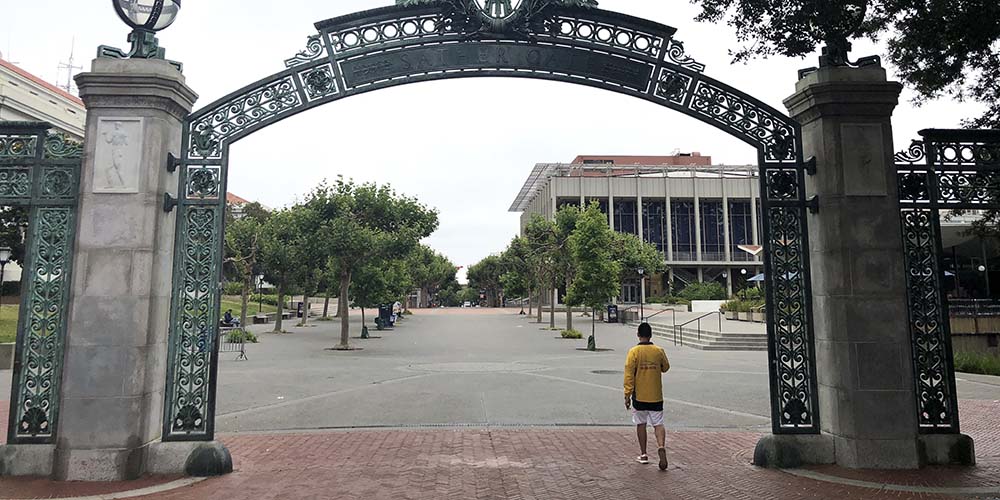
(Photo: Melinda Young Stuart/Flickr)
It often takes a catastrophic event to expose cracks in long standing systems. That’s what happened when the COVID-19 pandemic forced California’s colleges and universities to pivot in order to keep students safe, while continuing their education. Students already experiencing system inequities were hit the hardest and now the state is working to address the problem.
“Efforts to close the long-standing equity gaps across California’s postsecondary ecosystem are nothing new, but the pandemic exacerbated and exposed how pervasive and unjust the structural challenges faced by students across the state were and magnified it in a way that heightened the need for immediate change,” said Dr. Su Jin Jez, executive director of California Competes, a research and policy nonprofit focused on change in higher education.
Jez is a lead on CA FWD’s Providing Meaningful Career Pathways work group, which will hold a working session during the California Economic Summit in Monterey on November 9-10 to discuss California’s Recover With Equity roadmap.
She added that the work group “aims to develop solutions that will address workforce shortages and future needs with a focus of improving student credential attainment, and we do this with equity front and center through the integration of the roadmap recommendations.”
The Recover With Equity roadmap is the result of work done by state and national experts in higher education and innovation. The roadmap includes four recommendations with the goal of achievement by 2030.
- Fostering Inclusive Institutions by improving faculty, staff and administration diversity, cultivating inclusive, engaging, and equity-oriented learning environments and retaining students through inclusive supports.
- Streamlining Pathways to Degrees by establishing an integrated admissions platform, streamlining, and unifying the college admissions process and developing a common course numbering system.
- Facilitating Student Transitions by providing high-tech, high-touch advising and supporting college preparation and early credit.
- Simplifying Supports for Student Stability by integrating the platforms of state services for students, subsidizing internet access for eligible students and improving college affordability.
“Modernizing might be a good way to think about what some of the work we were trying to do to higher education,” said Michael Wiafe, a member of CA FWD’s Young Leaders Advisory Council and a lead of the CA FWD Providing Meaningful Career Pathways work group. “What’s the future? How do we create an infrastructure that’s going to open up more doors for people who haven’t had the doors open before? And how do we utilize new technology?”
As a current graduate student at University of California at Berkeley, Wiafe knows that some of the recommendations would have helped him and his fellow students. He points out the importance of a diverse staff and faculty as he recalls his undergrad studies. “We had a lot of conversations where I was the only Black person in the room. So how many rooms are happening with this conversation without me? How might that alter things and how different would it be if we had a Black professor actually teaching this stuff?”
But he added that one of the biggest changes would be streamlining platforms for student support systems for food, housing, and tuition assistance. “For example, if the university knows, and the state government and the federal government knows that a student is low-income, why don’t we just automatically provide those resources instead of making them apply?” he asks. “The line that one of my friends used to say was, ‘How many times do I have to tell the university that I’m poor?’”
The roadmap points out that California’s economy depends on an educated workforce. Unfortunately, the state’s educational attainment does not meet the current and anticipated need for high-skilled workers. And the pandemic only exacerbated the problem. In 2020, enrollment in the California Community College system decreased by 5.2% and the California State University system reported a 6% drop in freshman enrollment.
“California’s strength lies in its people, and its investment in higher education is a key driver of its resiliency, competitiveness, and growth,” said Jez. “Broadening the pathway to and through higher education with a focus on equitable access will be crucial so that prosperity is attainable by all. The ultimate outcome of this roadmap is one where every Californian can access higher education to bolster both personal and community development, engagement, and success.”
Implementing the roadmap is a big lift and Jez is hopeful state leaders have the will to make it happen. “I would love to see all stakeholders across higher education, labor and business, community-based organizations, research, and policy all make an intentional and collaborative effort to move forward on the recommendations laid out in the equity roadmap.”
Wiafe agrees, saying, “I would love to tackle the things that people have been trying to tackle forever. I think by 2030, if we could have more inclusive institutions, that would help with some of the other areas, like advising and providing more effective services.”
You can participate in this important discussion about preparing California’s future workforce by attending the California Economic Summit. For more information or to register, click here.

